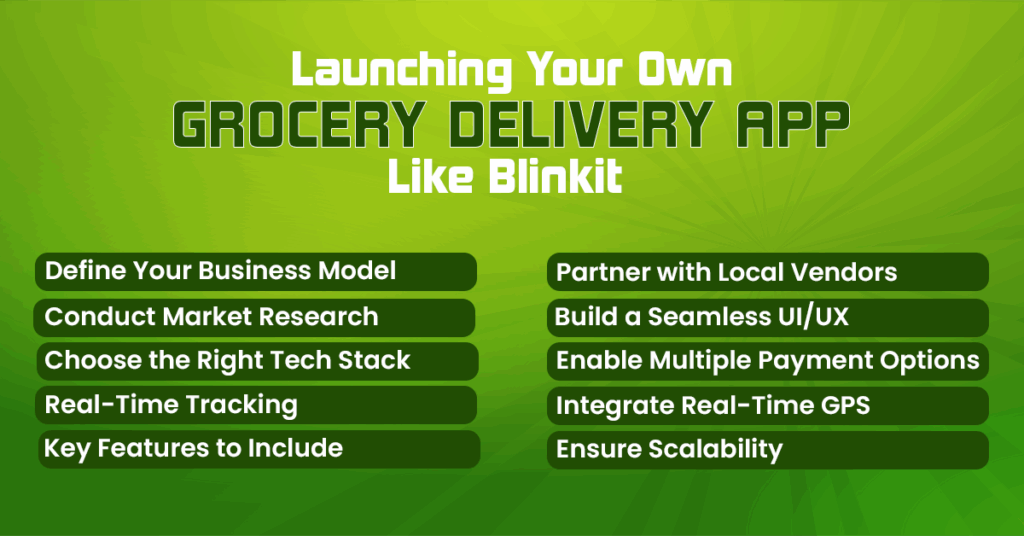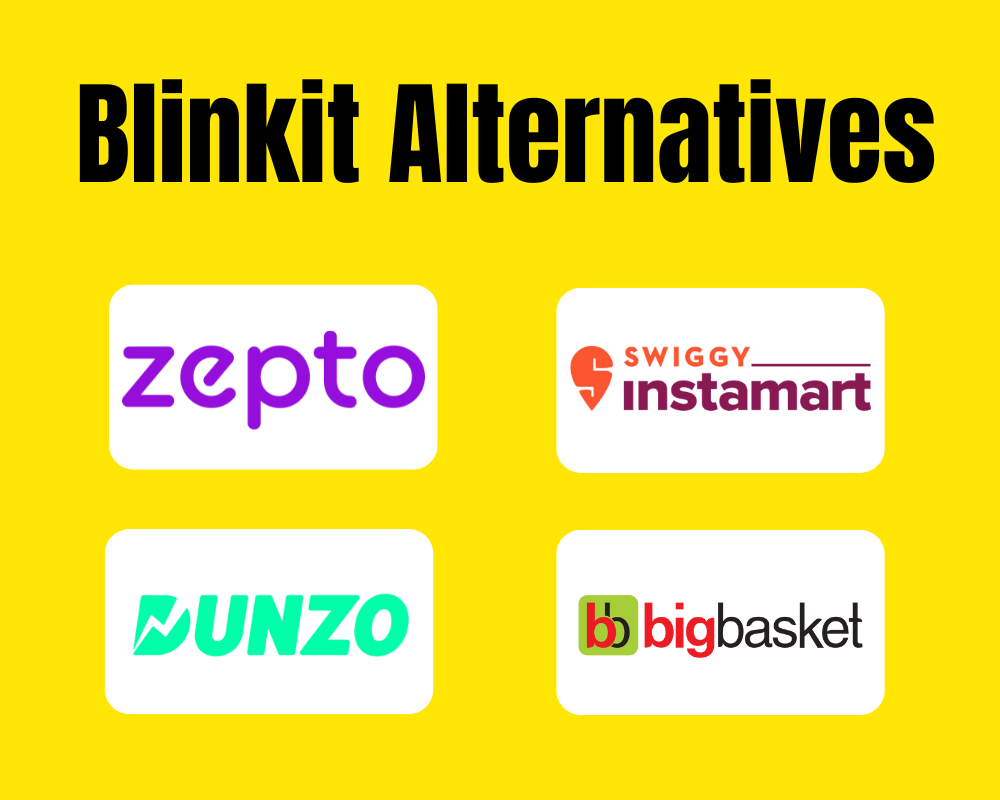The demand for speed and convenience has reshaped the way people shop for groceries, and Blinkit (formerly Grofers) is leading the charge in India’s quick commerce revolution. As one of the first platforms to promise grocery delivery within just 10 minutes, Blinkit transformed customer expectations and set a new industry benchmark. Its success has inspired giants like Swiggy Instamart, BigBasket Now, Zepto, and Dunzo to enter the instant delivery space.
Quick commerce (Q-commerce) is more than just a trend—it’s the future of urban retail. In cities where time is limited and convenience is king, users now expect essentials to arrive at their doorsteps within minutes. Powered by hyperlocal dark stores, real-time inventory, and last-mile logistics, this business model has not only disrupted traditional eCommerce but opened the doors for a new generation of delivery startups.
The best part? There’s still massive room for new players to enter. With the right strategy, tech stack, and execution, you can launch your own Blinkit-like app and tap into this high-growth market. In this blog, we’ll walk you through everything you need to know—features, tech stack, business models, and monetization tips—to build a successful instant grocery delivery app.
Blinkit’s Valuation & Market Position in 2025
As of 2025, Blinkit has solidified its position as one of India’s top quick commerce platforms, valued at over $13 billion. Originally launched as Grofers, Blinkit rebranded to focus on ultra-fast delivery—especially groceries and daily essentials within 10 minutes. Backed by Zomato, the platform has expanded aggressively across metro cities and Tier-1 markets, leveraging dark stores and real-time inventory systems. Blinkit holds a significant market share alongside competitors like Zepto and Swiggy Instamart. Its user-friendly app, fast service, and seamless payments have made it a household name, shaping the quick commerce ecosystem and attracting steady investor interest in 2025.
How Blinkit Works: Business Strategy of India’s Fastest Grocery App
Blinkit operates on a hyperlocal delivery model, enabling grocery and daily essentials to reach customers within minutes. The app partners with local kirana stores and small retailers, allowing them to list their products without worrying about logistics or packaging. Blinkit handles last-mile delivery and logistics, while store owners benefit from increased visibility and sales in their neighborhood.
Blinkit earns by charging commission on every sale—ranging from 8% to 15% for orders under ₹700 and up to 15% for orders under ₹1000. Additionally, it charges a delivery fee for small orders (typically under ₹250).
The company also monetizes through ads and promotional placements on the app, allowing brands to reach a vast audience across demographics. From product banners to sponsored listings, Blinkit offers various advertising options.
Delivery partners, working as independent contractors, pick and deliver orders using their own vehicles. They’re paid per delivery and can earn up to ₹30,000/month, including incentives based on distance and volume.
Through this efficient ecosystem, Blinkit scales revenue while providing ultra-fast convenience to consumers and business growth to local vendors.
From Idea to Launch: Building a Grocery Delivery App Like Blinkit

Define Your Business Model
Before diving into development, clearly outline your business model. Decide whether you will:
- Operate dark stores
- Partner with local vendors
- Work on a hybrid model
Each model impacts the app’s logistics, features, and backend complexity. A grocery delivery app like Blinkit typically uses dark stores in strategic locations for fast delivery.
Conduct Market Research
Analyze competitors like Blinkit, Swiggy Instamart, and Zepto. Identify gaps, study customer pain points, and gather user feedback. This research will help you identify your unique selling point and create a better user experience.
Choose the Right Tech Stack
The success of a grocery delivery app like Blinkit depends on a robust and scalable tech stack:
Frontend: Flutter or React Native for cross-platform apps
Backend: Node.js, Express.js
Database: MongoDB, PostgreSQL
Cloud Hosting: AWS, Google Cloud
Real-Time Features: Firebase, Socket.IO
These technologies ensure real-time updates, secure transactions, and smooth performance.
Key Features to Include
To stand out, your app should offer the following features:
User Panel:
- Easy onboarding
- Product search & categorization
- Real-time order tracking
- Multiple payment options
- In-app support
- Promo codes and rewards
- Delivery Partner Panel:
- Delivery route optimization
- Status updates
- Earnings and payout history
- Availability toggle
Admin Panel:
- Inventory and vendor management
- Analytics dashboard
- Customer & order management
Partner with Local Vendors or Set Up Dark Stores
A grocery delivery app like Blinkit thrives on hyperlocal logistics. Partnering with mom-and-pop stores helps in quicker delivery without investing heavily in warehousing. Alternatively, setting up your own dark stores allows better control over inventory and fulfillment speed.
Build a Seamless UI/UX
The UI/UX should be intuitive and fast. Aim for:
- 2-3 tap order placement
- Clear categorization
- Smooth navigation
- Fast loading time
A clutter-free design keeps users engaged and ensures repeat orders.
Enable Multiple Payment Options
Offer secure and flexible payment methods including:
- UPI
- Credit/Debit Cards
- Mobile Wallets
- Cash on Delivery (COD)
Integrate popular payment gateways and maintain PCI-DSS compliance for secure transactions.
Real-Time Tracking & Notifications
Use GPS tracking for accurate delivery updates. Push notifications help keep users informed about order status, promotional offers, and reminders.
Ensure Scalability and Security
As your user base grows, your app must scale without performance issues. Use cloud hosting and microservices architecture. Ensure data encryption and follow local data protection laws.
Test, Launch & Market Your App
Begin with a soft launch in one location. Collect feedback, iterate, and fix bugs. Once stable, roll out marketing strategies:
- Influencer promotions
- Referral bonuses
- Social media ads
- App Store Optimization (ASO)
India’s Fastest Growing Grocery Delivery App Blinkit Alternatives

- Zepto
- Swiggy Instamart
- BigBasket Now
- Dunzo
Factors to Consider Before Hiring a Grocery App Development Company
Hiring the right grocery app development company is a make-or-break decision for your grocery delivery business. Here are some key factors to consider:
Relevant Experience
Look for companies with a proven track record in building grocery or on-demand delivery apps.
Review their portfolio and case studies for quality assurance.
Technical Expertise
Ensure they’re skilled in tech stacks like Flutter, React Native, Node.js, and Laravel.
Check for integration capabilities with cloud hosting, real-time tracking, and secure payment gateways.
UI/UX Design Focus
A clean, fast, and intuitive design is non-negotiable.
Great UI/UX leads to better user experience and higher retention.
Post-Launch Support
Choose a partner that offers ongoing maintenance, updates, and bug fixes.
Ensure long-term assistance for scalability and performance.
Business Understanding
They should understand your business model—dark stores, vendor-based, or hybrid.
Look for companies that offer customized solutions, not cookie-cutter apps.
Frequently Asked Questions
1. Is grocery delivery business profitable in the current market?
Yes, it’s profitable due to growing demand, especially in cities. With the right strategy, it can scale fast and generate high returns.
2. What is the cost to build a grocery delivery app like Blinkit?
Development costs range from $10,000 to $100,000+ depending on features, platform, and complexity.
3. What features are essential in a successful grocery delivery app?
Key features: real-time tracking, secure payments, order scheduling, vendor & delivery partner panel, and admin dashboard.
4. Marketing strategies to make a grocery delivery business a billion-dollar company
Use hyperlocal ads, influencer marketing, referral programs, loyalty rewards, and strong partnerships with local stores.
5. How to choose the right app development company for your grocery delivery startup?
Pick a team with delivery app experience, clear pricing, client reviews, scalable tech skills, and strong support services.
Similar Blog: How to Build a 10-Min Delivery App Like Zepto?






What do you think?
It is nice to know your opinion. Leave a comment.